Using the data compiled from the EX360 thermal testing I have compiled the following tables in an attempt to show another way how the its performance varies against itself at the flow rates and fan speeds tested. Let’s first take a look at the raw W/10DT data we will be using:
We can then use this data to show percentage gains relative to a reference point. It’s an interesting way to show gains/losses while changing a variable. This first table shows performance gain or loss relative to 1.0GPM flow rate:
This shows that increasing flow to 1.5GPM has little gain while lowering flow to 0.5GPM does affect performance more.
We can also focus on 1300RPM as our reference and see how much gain or loss in performance we get by changing fan speed:
As expected the change is dramatic. Lastly we can combine both and choose 1300 RPM and 1.0 GPM as our reference point to show both effects concurrently:
So from the data above we can get a very good idea of how the EX360 radiator performs relative to itself. But there is a large selection of 360mm radiator models to choose from, released from numerous manufacturers. So, we need to start comparing performance between them.
Push Only Data vs Competition
Let’s focus on the Push Only results for now and come back to the Push/Pull data later. While for Push/Pull we tested three flow rates, the Push Only testing was conducted only at 1GPM in order to save time. For a comparison vs thicker radiators make sure to check out the 2015 Rad Round Up which compares 27+ radiators including the EX360.
Let’s start with 750 RPM and see how it compares to the competition:
Slim radiators often do best at low fan speeds in push. Our expectation therefore is that this result at 750RPM will be the EX360’s best result. However the FPI is reasonably high so let’s not jump to conclusions just yet.
At 1300RPM things are however looking worse.
At 1850RPM the EX moves back up a spot, but hardly makes a compelling case for itself.
So the EX360 was a below average performer compared to the competition with Push Only fans. As is the most likely installation scenario for this radiator the results were a little disappointing.
Even though Push/Pull fan assemblies are probably not what the intended use for a slim rad actually is (for most users) we tested it anyway.
So let’s find out how it fared…..
Push/Pull Data vs. Competition
Let’s now look at the Push/Pull results and see how the EX 360 compares. For Push/Pull we have averaged the results from the 3 flow rates at which we tested.
Again the EX360 is languishing near the bottom, although it must be pointed out that the 2nd to 5th place results are all very close, so in reality EX is not as far behind as the order makes it appear.
At 1300RPM the EX pics up a position, and the extremely high FPI Koolance rad has taken the lead.
At 1850 Push/Pull the EX again makes a positional improvement, due to it’s dense core structure, but the Koolance slim has streaked away with the win.
Well the EX360 is hardly a top performing radiator – but at least it never hit the bottom of any charts.
Let’s also combine the Push Only and Push/Pull results at the 1.0 GPM flow rate into one plot for each fan speed tested. These plots show just how well the best slim radiators performed against the competition, while showing the EX 360’s half decent performance.
The EX360 in Push/Pull is already overtaken the by the Nemesis GTS in Push at this low fan speed condition. There seems to be no reason to run the EX360 in P/P.
At 1300RPM there are now a lot of push options that would offer more performance than the EX360.
The trend continues at 1850RPM where if we are to be honest, we have better options to choose from in terms of performance, with the very high FPI Koolance Push Only result even beats the EX’s Push/Push result.
From all of these results we can create a “master performance factor”. The radiator with the best cooling ability (W/10ΔT) at each gpm/rpm combo was awarded a score of 100, and each other radiators W/10ΔT result was scored as percentage of the top performer:
So, as predicted the EX360 did perform best (relative to the competition) in the 750rpm (slow fan speed) testing. It’s results were not great by any stretch of the imagination, but that is where it was closest to the other radiators in the test group when looking at overall performance. We see that the EX’s comparative performance get’s worse as the fan speed is increased. Also noteworthy is that it’s high flow rate results appear to have performed better than the most of the test group as we see percentage gains across each of the fan speeds as the flow rate increases.
All these percentage scores were averaged giving us the Averaged Performance Factor of each radiator. This way of looking at the comparison takes away any advantages that a radiator may have at higher or lower fan speeds and looks at an overall average. While this appears fair it does tend to favor those radiators that are all rounders and those radiators which do very well at high RPM. Most users should be more focused on their specific use case. Check in the Round Up for performance comparisons at every gpm/rpm combo for even more details and cross comparison results.
Firstly – the Push Only APF:
In Push Only the EX360 finishes in 5th place by the slimmest of margins. It is clear that 4 of the slim rads all had similar performance , while there was one clear winner and one clear loser.
In Push/Pull the score is slightly better and the EX gains a position. Again the results in the middle of the pack are very close together.
Finally we created the Master Performance Factor which is calculated from the averaged results of all the thermal tests, Push and Push/Pull at all flow rates and all fan speeds.
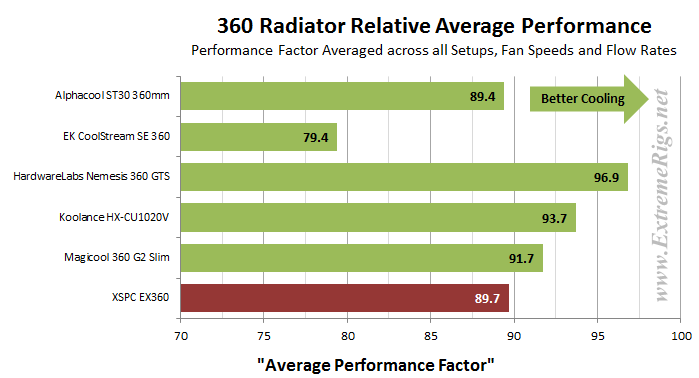 In the Master Performance Factor comparisons the EX 360 finishes in 4th place by the closest of margins.
In the Master Performance Factor comparisons the EX 360 finishes in 4th place by the closest of margins.
Next up – Summary!







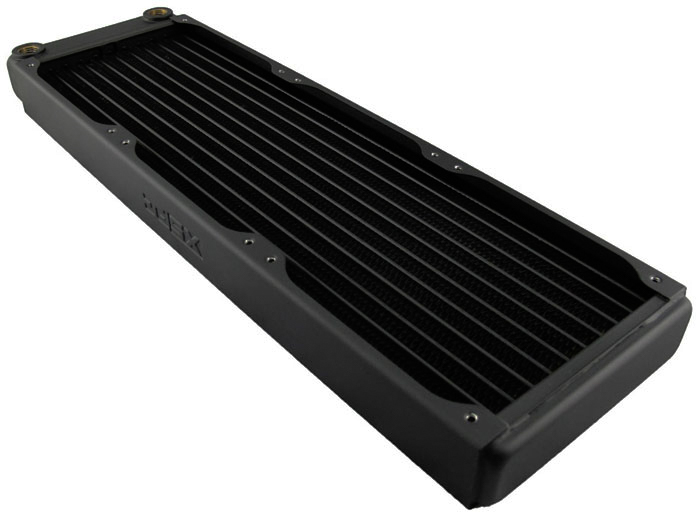
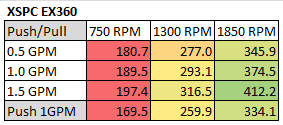
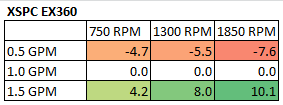
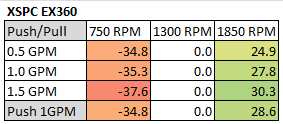
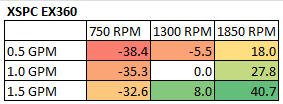
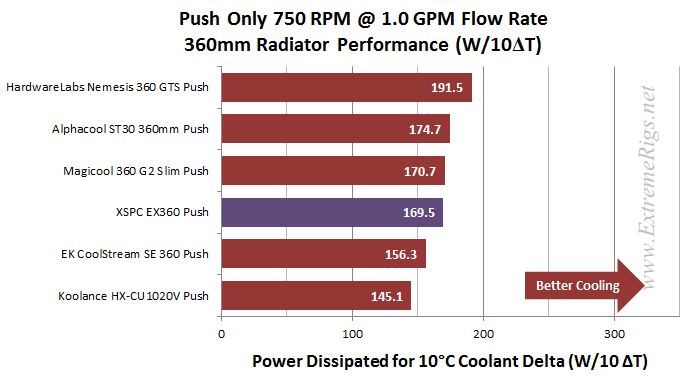
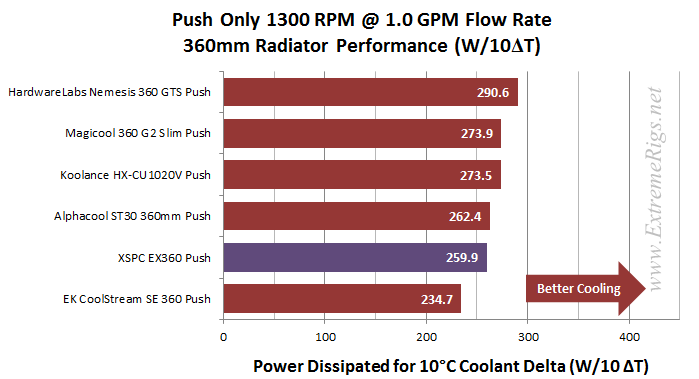
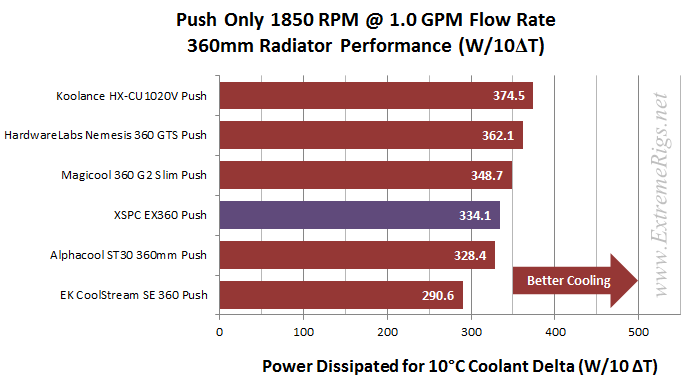
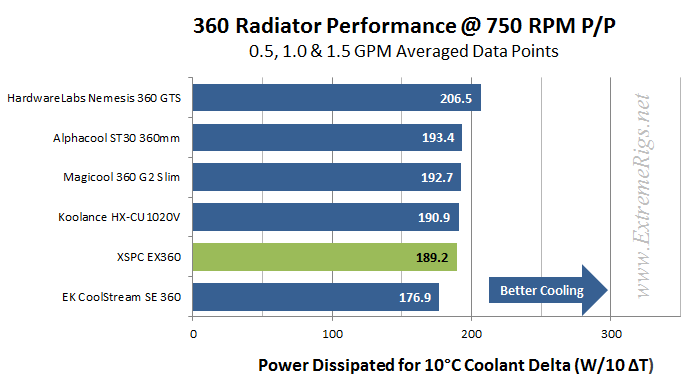
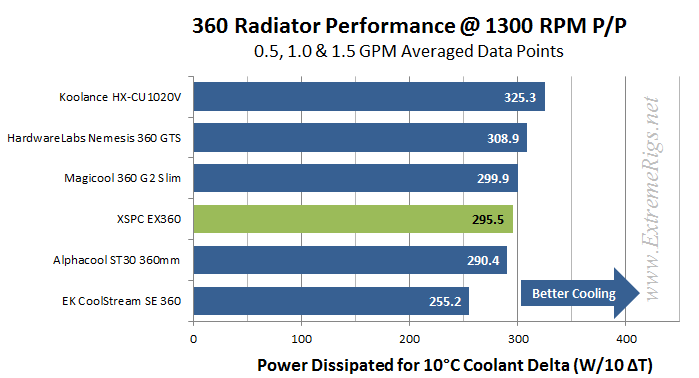
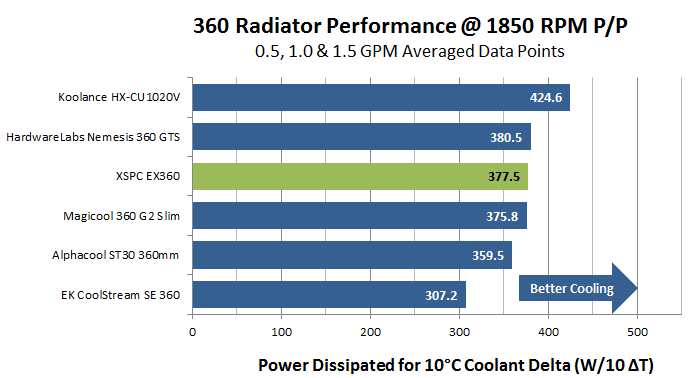
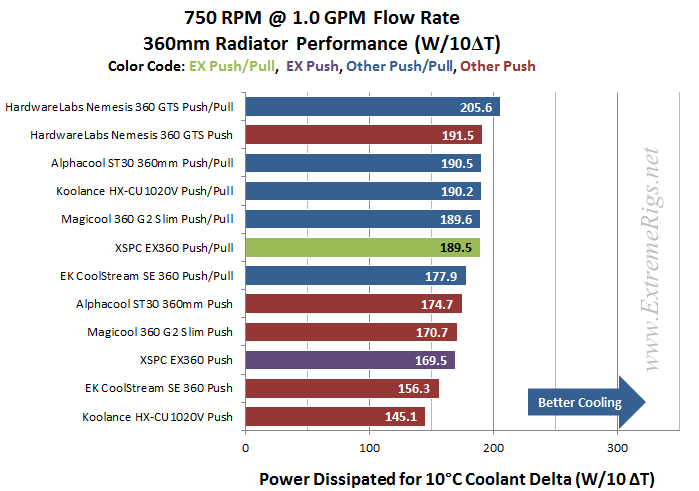
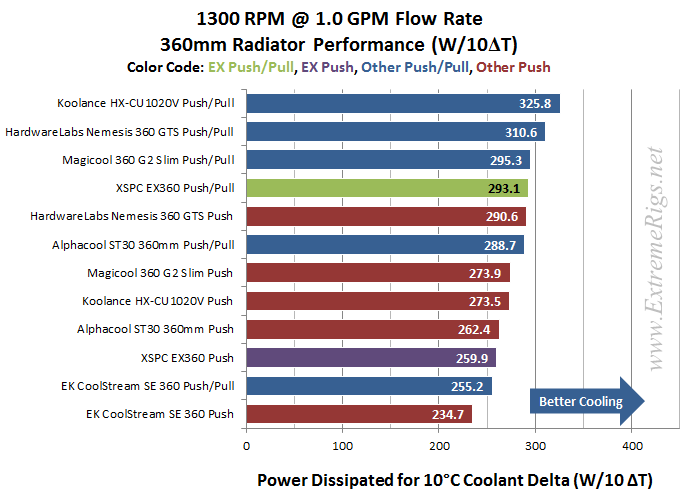
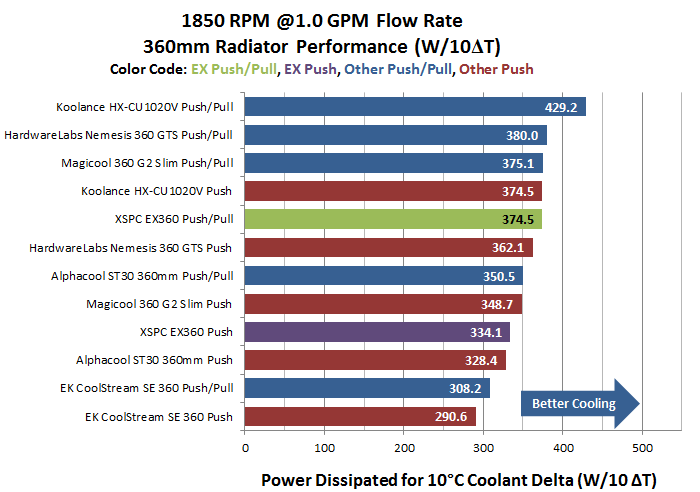
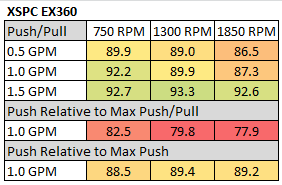
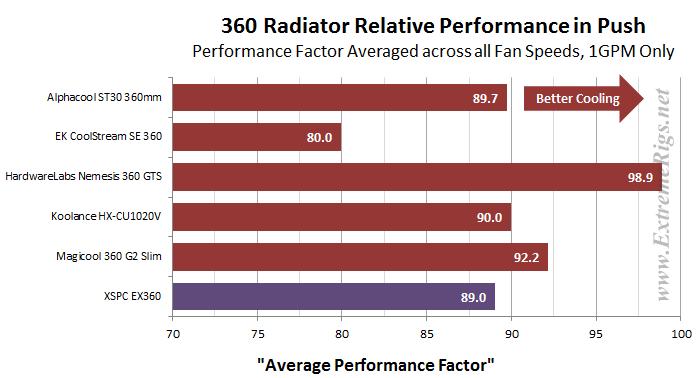
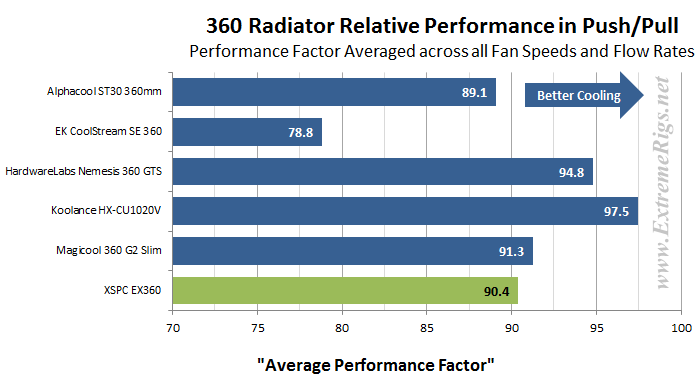




[…] Radiator Phobya G-Changer V2 Full Copper 360 Radiator Watercool HTSF2 3×120 LT 360 Radiator XSPC EX 360 Radiator XSPC RX v3 360 […]
Comments are closed.